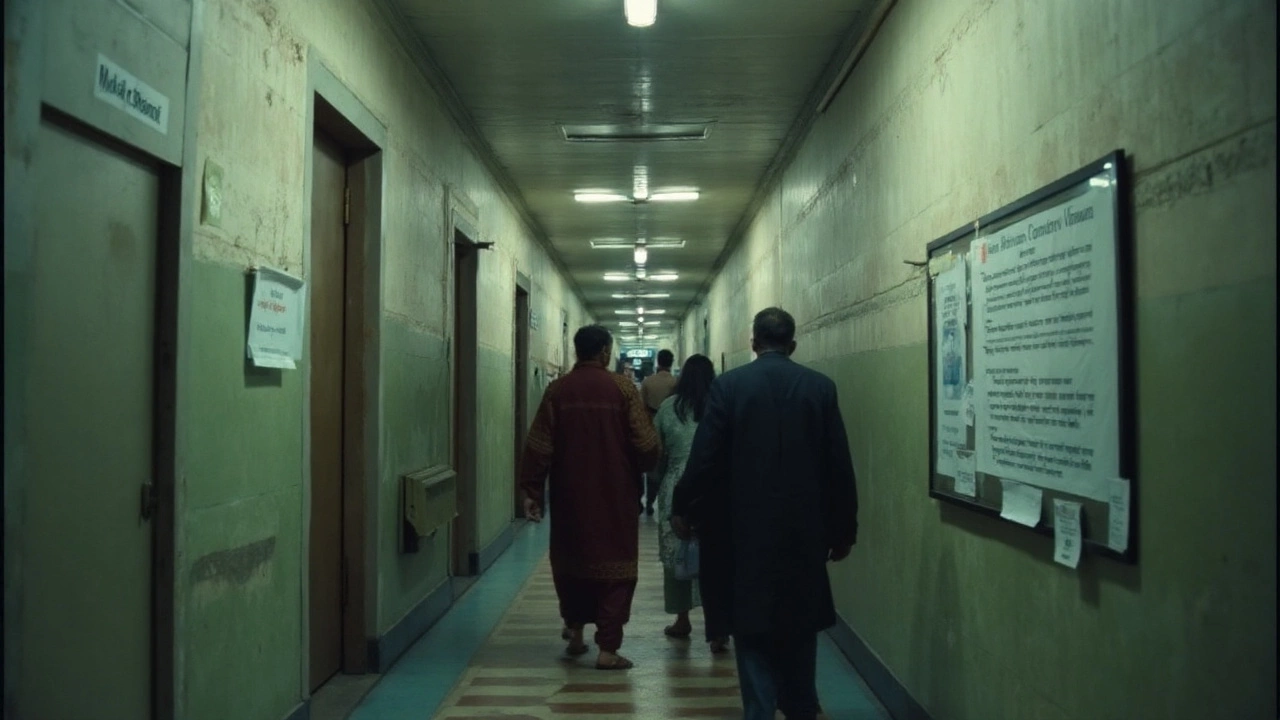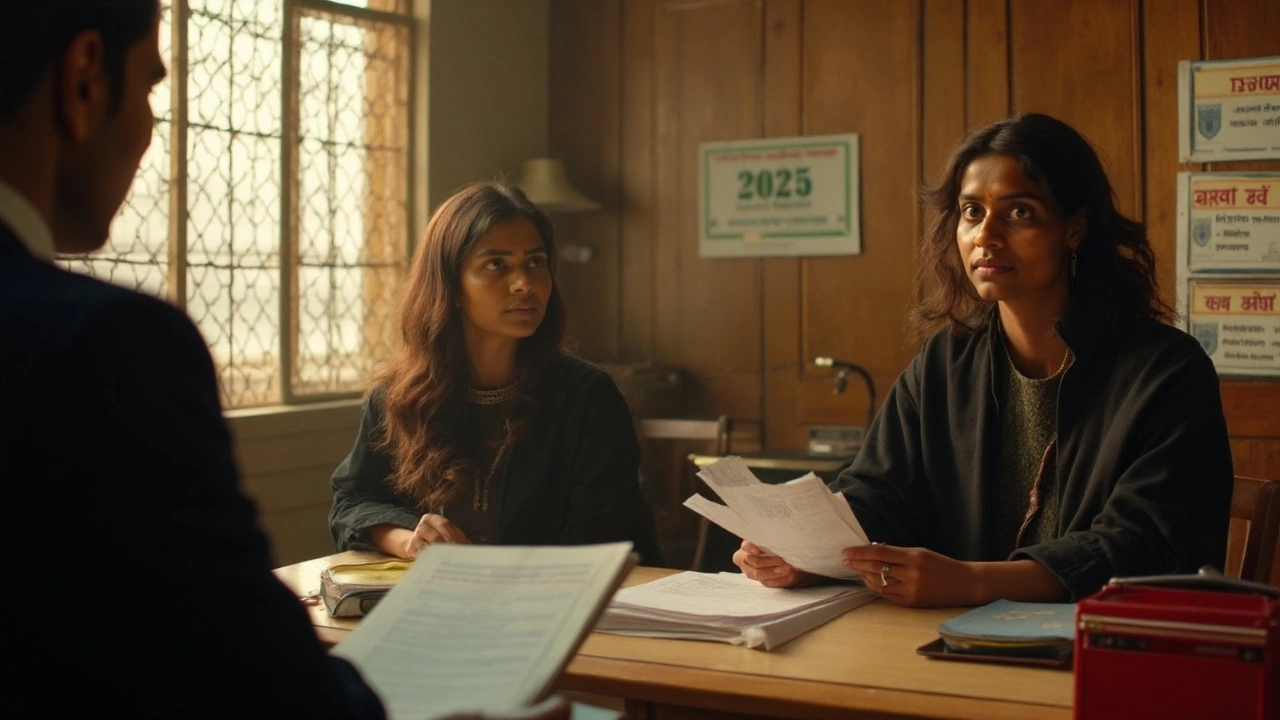Here’s the straight answer you came for: there’s no such thing as instant divorce in India. Indian law doesn’t let you walk into a court and walk out single the same day. But if both of you agree, settle your issues upfront, and ask the judge to waive the cooling-off period, you can wrap things up far quicker than most people think-often in 30-90 days in busy cities, sometimes even in a few weeks in smaller districts. If there’s a fight (contested divorce), expect a year or more.
What you probably want to do next: get clarity on the fastest legal options, know how long each path really takes, get a realistic 2025 timeline, see what documents you need, and avoid scams promising “same-day divorce.” I’ll cover all that below with practical steps and the law that judges actually use.
- TL;DR: No instant divorce. The fastest legit route is mutual consent with a court waiving the 6‑month cooling-off period.
- Courts can waive the wait when everything (alimony, kids, property) is fully settled-guided by the Supreme Court in Amardeep Singh v. Harveen Kaur (2017).
- “Triple talaq” (instant talaq) is invalid and a criminal offense under the Muslim Women (Protection of Rights on Marriage) Act, 2019.
- Contested divorce usually takes 12-36 months. Ex‑parte (if the other spouse never appears) can still take several months.
- Beware of “same-day divorce” touts. At best, they’re selling a notarized deed that doesn’t dissolve a civil marriage.
What “instant divorce” really means in India today
Let’s set expectations with the law as it stands in 2025. Indian family courts aim for reconciliation first, then a lawful exit. The big picture depends on how you married and which law applies.
Key laws and where the time goes:
- Hindu Marriage Act, 1955 (HMA): Applies to Hindus, Buddhists, Jains, Sikhs. Mutual consent divorce (Section 13B) expects 1-year separation and has a 6-month cooling-off period between the first and second motions. Courts can waive that wait if the marriage has broken down and the settlement is complete (Supreme Court: Amardeep Singh v. Harveen Kaur, 2017; reiterated in later cases).
- Special Marriage Act, 1954 (SMA): Civil marriages across religions. Similar mutual consent rules (Section 28)-1-year separation, 6-month cooling-off period that courts have also waived applying Amardeep Singh principles.
- Indian Divorce Act, 1869 (Christians): Section 10A allows mutual consent after living separately for 1 year. Many High Courts permit waiver of the 6-month waiting period by relying on Amardeep Singh logic.
- Parsi Marriage and Divorce Act, 1936: Section 32B (mutual consent) requires 1-year separation. No formal 6-month cooling mandated in the text, but the case still goes through the Parsi Matrimonial Court with delegates-timelines vary by city.
- Muslim personal law: “Instant triple talaq” (talaq-e-biddat) is void and criminal since 2019. Valid routes like Talaq-e-Ahsan/Hasan require process and time; consensual routes like mubarat (mutual) and khula (wife-initiated) are quicker but not a one-hour affair, and you’ll usually need proper documentation and often a court decree for official records, visas, or bank updates.
One more piece: the Supreme Court in Shilpa Sailesh v. Varun Sreenivasan (2023) confirmed it can grant divorce on “irretrievable breakdown” under Article 142. That’s a Supreme Court-only power-it doesn’t let trial courts skip the law just because both parties are unhappy. Family Courts still need statutory grounds or mutual consent.
So is anything “instant”? No. The fastest lawful experience looks like this: both spouses file a joint petition, present a clean, complete settlement, ask for waiver, give evidence on the same day (or within weeks), and the judge lets you combine first and second motions. That’s rare but real in 2025, especially when paperwork is perfect and there’s no dispute left to solve.
| Route | Law | Pre-conditions | Cooling-off | Min realistic timeline (if smooth) | Fastest path notes |
|---|---|---|---|---|---|
| Mutual consent | HMA Sec 13B | 1-year separation; full settlement | 6 months (can be waived) | 30-90 days (with waiver) | Waiver per Amardeep Singh; many courts combine motions |
| Mutual consent | SMA Sec 28 | 1-year separation; full settlement | 6 months (can be waived) | 30-120 days | Similar practice to HMA; vary by district |
| Mutual consent | Indian Divorce Act Sec 10A | 1-year separation; full settlement | 6 months (often waivable) | 45-150 days | HCs have allowed waiver following SC guidance |
| Mutual consent | Parsi Act Sec 32B | 1-year separation; full settlement | No express 6 months | 60-180 days | Heard with Parsi delegates; scheduling drives time |
| Contested divorce | All personal laws | Grounds like cruelty, desertion, adultery etc. | None | 12-36+ months | Evidence, cross-exam, appeals make it long |
| Ex-parte divorce | All personal laws | Other spouse served but doesn’t appear | None | 4-12 months | Still needs proper service and proof |
| Mubarat/Khula | Muslim law + Family Courts Act | Consent (mubarat) or wife-initiated (khula) | N/A | 2-12 weeks (documentation) | Often regularized via court/registration for records |
Timelines vary by city, court workload, and how clean your paperwork is. E-filing and virtual appearances, now common in many states under eCourts Phase III, can shave off weeks.

The fastest legal route: mutual consent (and how to actually get it fast)
If speed is your north star, aim for mutual consent with a waiver of the cooling-off period. Judges waive only when they’re convinced there’s nothing left to fight about. That means your settlement must be airtight and fair.
Step-by-step for a quick mutual consent divorce (HMA/SMA/IDA/Parsi):
- Lock the settlement. Put in writing: permanent alimony (lump sum or monthly), child custody/visitation/expenses, property and bank accounts, stridhan return, pending criminal/civil cases (e.g., 498A, DV Act, 125 CrPC), and who bears legal fees. Keep it clean and realistic.
- Collect documents.
- Marriage proof: certificate, photos, invitation card
- Address/ID: Aadhaar/passport/driver’s license
- Proof of separation: rental agreements, bills, chats (if needed)
- Children’s birth certificates and school details
- Income proofs: salary slips, ITRs (if alimony/child support is involved)
- Joint property and bank details
- Two passport photos each
- File the joint petition. Your lawyer drafts the mutual consent petition (HMA 13B(1)/SMA 28(1)/IDA 10A/Parsi 32B), annexes the settlement/MoU, and files in the correct Family Court (jurisdiction based on where you married, last lived together, or where one spouse now lives).
- Ask for waiver upfront. File an application to waive the 6‑month cooling-off. Cite Amardeep Singh v. Harveen Kaur (2017). Attach proof that you’ve been separated for a year, tried mediation, and settled every issue. Explain any pending cases and how they’ll be closed.
- First motion: statements + mediation. Courts often send you to court-annexed mediation. If you’ve truly settled, mediation is a quick formality. Give your statements on oath. If the judge is satisfied, they may list your waiver request soon.
- If waiver is granted: combine motions. Many judges will record second motion statements the same day or within a short window. That’s the “fast-forward” moment. You’ll get a decree after orders are typed and signed.
- Close the loop. Withdraw or quash related criminal/civil cases as per your settlement. Update bank/KYC, PAN, HR records, PF nominations, insurance, and-if you plan to remarry-wait for the certified copy of the decree.
How do judges decide on waiving the wait? The Supreme Court in Amardeep Singh set out practical factors:
- Separation is already 1+ years and reconciliation chances are bleak.
- All disputes-alimony, custody, property-are fully resolved.
- Pendencies can be closed or are taken care of in the settlement.
- Dragging six months would only extend pain, not help reconciliation.
Pro tips that shave weeks:
- Use e-filing where available and ask for hybrid/VC appearances (many courts allow one spouse to join by video with ID verification).
- Attach proof of prior mediation or counseling attempts. Judges like seeing that you’ve tried.
- Make child arrangements detailed (schooling, vacations, medical consent). Vague plans cause delays.
- If NRI: give a special power of attorney to a trusted relative/lawyer to sign and appear; notarize/apostille as required.
- Bring demand drafts/NEFT proof for lump-sum alimony during hearing. Money on the table signals finality.
Cost and paperwork realism:
- Filing fees are low; lawyer fees vary by city (₹20,000 to ₹2,00,000+ for mutual consent, more for contested). Quick calendars cost more-but pay for experience, not promises.
- Many courts print decrees in 3-10 working days after the final order. You can apply for a certified copy faster with urgent fees.
Can you do it without lawyers? Legally yes, practically risky. A poorly drafted settlement is how “quick” divorces turn into long, expensive fights later-especially with kids or property in the mix.
What about community-specific faster paths?
- Muslim marriages: Consensual dissolution via mubarat or khula is quicker than court litigation. Document it properly (deed, witnesses, mehr, iddat compliance), then move Family Court to record/acknowledge it if you need official recognition for passports/visas/banks.
- Goa: Follows a different civil code. Mutual consent still isn’t instant-count on court time for a decree.
Red flags to avoid:
- “Same-day divorce” ads: at best they’ll hand you a notarized paper that means nothing if you married under HMA/SMA/IDA/Parsi law.
- Skipping formal custody/alimony terms: this backfires during school admissions, passports, or later disputes.
- Hiding income/assets: judges can reject the settlement or revisit maintenance later.

Edge cases, FAQs, and your next steps
Short answers to the questions that usually pop up next.
- Is “instant triple talaq” valid? No. The Supreme Court struck it down (Shayara Bano v. Union of India, 2017), and Parliament criminalized it in the Muslim Women (Protection of Rights on Marriage) Act, 2019.
- Can a judge grant divorce in one hearing? Rare, but it happens in mutual consent when waiver is granted and paperwork is perfect. Expect at least one proper appearance and statements on oath.
- What if my spouse won’t agree? File contested divorce on valid grounds (cruelty, desertion, adultery, conversion, mental disorder, venereal disease, renunciation, not heard alive for 7 years-varies by law). It’s slower. Mediation may still get you to settlement.
- What if my spouse is missing? You can seek ex-parte divorce after proper service attempts, including newspaper publication. It still takes months.
- Can the 1-year separation be waived? Family Courts generally can’t waive the statutory 1-year “marriage must have subsisted for one year” bar to filing. The 6-month cooling is what’s waivable after filing mutual consent.
- Annulment faster than divorce? Only if you truly have grounds like impotence, fraud, prohibited relationship, or underage marriage. Courts look closely-don’t force-fit an annulment just for speed.
- Domestic violence or safety issues? Seek immediate protection orders under the Protection of Women from Domestic Violence Act, 2005; and interim maintenance under CrPC 125/HMA Sec 24. You can run these alongside divorce.
- Will I need to attend personally? Usually yes, at least once. Many courts permit one spouse to appear via video or a holder of a special power of attorney for routine steps.
- When can I remarry? After getting the certified copy of the divorce decree and waiting out appeal periods if advised by your lawyer (often 90 days from decree, unless both waive and there’s no plan to appeal).
Quick decision guide:
- If you both agree on everything: Go mutual consent, file waiver, push to combine motions.
- If you agree on most things but not money/kids: Try court mediation first; settle terms; convert to mutual consent.
- If the other side is non-cooperative/abusive: File contested divorce plus interim protection/maintenance; keep records of abuse; don’t delay safety steps.
- If one spouse is overseas: Use VC appearances and a special power of attorney; choose jurisdiction where at least one of you lives or where you last lived together.
- If you married under Muslim personal law and agree mutually: Consider mubarat/khula with proper documentation and, if needed, court acknowledgment for official use.
Documents checklist you can copy-paste into your prep app:
- Marriage certificate and 5-10 photos
- Aadhaar/passport/driver’s license (both)
- Proof of current addresses
- Proof of separation (if disputed): rent receipts, bills, messages
- Children’s birth certificates, school IDs, fee receipts
- Income proof (last 6 months salary slips, last 2-3 ITRs)
- Property papers, loan statements, vehicle RCs
- List of jewelry/stridhan and its return status
- Bank account details for alimony transfers
- Draft settlement/MoU with all terms
- Any pending case numbers and proposed quashing/withdrawal clauses
Common pitfalls that slow people down:
- Vague custody clauses (“We’ll figure it out later”). Courts hesitate to finalize without a clear plan.
- Hidden loans/assets. The moment a judge senses foul play, waiver chances drop.
- Tax blind spots. Lump-sum alimony is typically tax-free in the recipient’s hands and not deductible for the payer; monthly maintenance is taxable to the recipient. Confirm current positions with a CA.
- Poor jurisdiction choice. Filing where neither of you have a strong link invites objections and delays.
Authoritative sources you can quote in court filings (no need for links, just accurate citations):
- Hindu Marriage Act, 1955-Sections 13B (mutual consent), 24/25 (maintenance)
- Special Marriage Act, 1954-Section 28 (mutual consent)
- Indian Divorce Act, 1869-Section 10A (mutual consent)
- Parsi Marriage and Divorce Act, 1936-Section 32B (mutual consent)
- Family Courts Act, 1984-mediation first, family-friendly procedure
- Muslim Women (Protection of Rights on Marriage) Act, 2019-triple talaq invalid and penal
- Shayara Bano v. Union of India, (2017) 9 SCC 1-triple talaq struck down
- Amardeep Singh v. Harveen Kaur, (2017) 8 SCC 746-cooling-off waiver principles
- Shilpa Sailesh v. Varun Sreenivasan, (2023) 7 SCC 126-SC’s Article 142 power on irretrievable breakdown
Next steps if you want to move fast this month:
- Write a complete settlement draft-money, kids, property, cases. Keep it specific.
- Collect documents and line up two sets of photo IDs and photos.
- Confirm jurisdiction (where you last lived together or where either spouse lives).
- Hire a lawyer who has done waivers recently in your court. Ask for two recent order copies.
- File joint petition + waiver application. Ask for mediation and early hearing dates.
- Be available for statements (in person or VC). Bring proof of alimony transfers/DDs.
- Follow up for the decree copy, then execute the post-divorce checklist (banks, HR, PAN, insurance, passport, school).
Troubleshooting by scenario:
- Judge won’t waive cooling-off: Fix gaps the judge flagged (e.g., missing child plan), document failed reconciliation, re-apply after a short interval. Or wait out the 6 months and do second motion on day 181.
- Spouse backs out before second motion: Mutual consent needs ongoing consent. Try settlement again; if deadlock persists, switch to contested grounds.
- Spouse overseas can’t travel: Seek permission for video testimony; use a special power of attorney; plan notarization/apostille early.
- Multiple pending cases (498A/DV/125): Put clear terms in the settlement on compounding/quashing; coordinate listings so the High Court can quash 498A on settlement while Family Court records consent.
- Safety risk at home: File for protection orders and residence/monetary relief under the DV Act immediately. Safety first; divorce speed comes second.
If you remember just one thing, make it this: speed comes from certainty. The more precise your settlement and paperwork, the more likely a judge will fast-track you.
